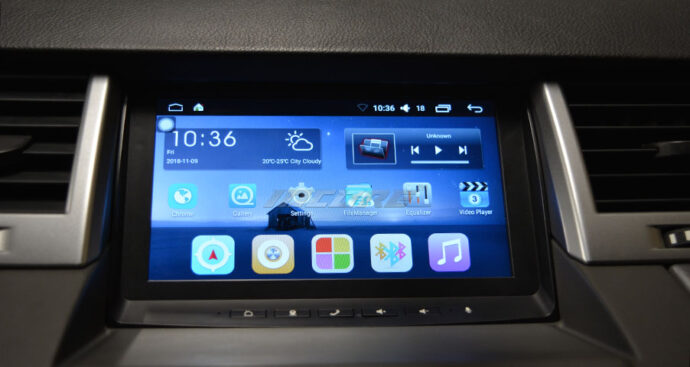Land Rover Android Navigation – A clean sheet design
The task
Our client, a UK automotive supplier approached us with an opportunity they had identified for Land Rover vehicles. In an age where navigation is essential for many drivers, these cars lacked modern mapping or at worst had a cubby hole instead of a display. The addition of an aftermarket unit with a factory style appearance and the latest technology represented a market opportunity.
Services we provided
Physical plastic casing design and moulding, physical buttons design and moulding, metal bracket design and moulding, electrical wiring/connector design, PCB design
The proposal
After initial evaluation, we proposed a replacement screen unit, with a high resolution touch screen, designed to complement the aesthetic of the OEM interior. Operating on 12v running a self contained Android software platform which would allow access to Google Play Store to download any apps. Equipped with 2 USB ports, this allows connection of external accessories such as flash drive, tyre pressure monitor, DAB radio etc. Aftermarket camera connection is supported.
The solution
Our engineering team initially focused on the hardware application, assessing the viability of fitment and integration with the vehicles electrical system. A draft wiring diagram was produced and electrical testing was performed.
The client supplied a development vehicle which allowed us to ascertain the product parameters.
The next key milestone was specifying the hardware platform. An intel based hardware platform was proposed and developed.
Next came assessment of the physical qualities of the device. This design was somewhat complex as there was multiple moulding required which all had small tolerances, for example, outer casing, buttons, membrane and mounting equipment
Prototyping was successful and the finished product had a few small revisions, such as the addition of green backlighting to the buttons.
In vehicle testing proved successful and the product has subsequently gone on to success in the retail and trade markets, with a lot of positive customer feedback.
This project took around 4 months from the project start to the first batch of finalised production.

